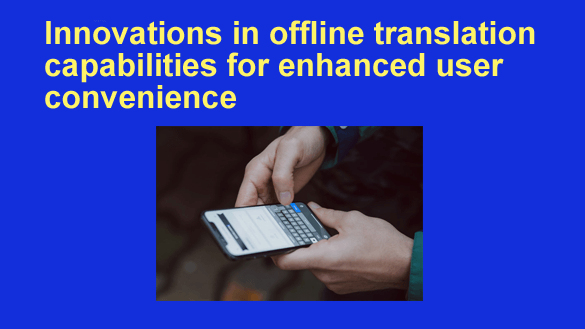 As we navigate our increasingly globalized society, the ability to communicate across language divides has transitioned from a mere convenience to a critical necessity.
As we navigate our increasingly globalized society, the ability to communicate across language divides has transitioned from a mere convenience to a critical necessity.
Especially in scenarios where internet access is unreliable or unavailable, communication across language divides has become a critical necessity.
In this post, we’ll explore the advancements in offline translation technology and how they’re changing the way we communicate.
By leveraging better AI, more intuitive user interfaces, and tight security, these tools are proving to be vital for those who travel the globe or work across different languages.
The Rise of Offline Translation Apps
Picture arriving in a country where both the spoken language and urban setups are alien to you. Here, offline translation apps become essential. These apps allow you to convert text, speech, and images directly on your mobile device, functioning without web access.
Moreover, business professionals across the globe are increasingly adopting these tools for managing international meetings, negotiating deals, and navigating local markets. An offline translation app allows professionals to overcome language barriers, improve localization, and enhance their effectiveness and autonomy in foreign business environments.
Advancements in artificial intelligence and machine learning are propelling increases in the speed and accuracy of these offline translation apps. They facilitate instant translations, which lead to smoother communication and foster mutual understanding among diverse cultures in different settings. As technology continues to advance, these apps are transforming the way businesses interact and bridge language divides in a globalized market.
Technological Advancements Driving Offline Translation
Recent advancements in technology are propelling offline translation to new heights. The key to an effective translation tool lies in its accuracy, which heavily relies on the underlying technology. Artificial intelligence, particularly neural machine translation, has made significant strides in this field.
By processing and predicting language patterns, it has vastly improved the precision and speed of offline translation. This technology sets itself apart by not only providing literal translations but also comprehending context, idioms, and cultural subtleties—areas where traditional translators often struggle.
Thanks to developments in mobile storage technology, these translation apps can now directly store extensive language databases on users’ devices. This means that a wide range of languages is readily accessible at their fingertips, making communication across linguistic barriers more seamless than ever before.
User Interface and Experience Enhancements
A sharper focus on user experience has emerged as technology advances. Modern offline translators feature straightforward interfaces that streamline the process, making them easy to use for anyone, regardless of their experience with technology.
Individuals with visual or auditory challenges benefit from pivotal tools like voice-to-text and text-to-speech, ensuring universal access to the technology. For instance, Google Translate handles translations across over 133 languages spoken worldwide. These improvements not only boost the functionality of translation apps but also enhance the overall interaction, making it fluid and pleasant.
Moreover, users can now utilize augmented reality to direct their device’s camera at unfamiliar text for immediate translations, enhancing convenience. These advancements are paving the way for effortless communication across the globe.
Security and Privacy Concerns Addressed
When it comes to technology, we have a duty to keep data safe and private. Offline translation apps take this seriously by storing data right on your device. This means no need to send it over the internet, which lowers the risk of hacks and privacy breaches.
These apps can be a smart choice for private chats and important messages due to their approach of storing data directly on the device. Users trust them more because of their strong focus on security. This, in turn, boosts how many people use offline translation tools. Developers know the importance of privacy, so they make sure their apps are secure, attracting more users who want to protect their info.
Furthermore, this focus on security aligns with regulations, ensuring compliance and responsibility in our tech-driven world. As tech evolves, keeping data safe stays essential to keep users happy and their info protected.
The Future of Offline Translation Technology
The future of offline translation tech holds vast promise. As the world changes and new linguistic hurdles emerge, it’s crucial to continually update and broaden language coverage. The combination of augmented reality with translation apps has the potential to revolutionize user interaction.
Picture pointing your phone at a menu or sign and instantly seeing the translation on the screen. These advancements could make language barriers nearly disappear, making communication effortless and instant.